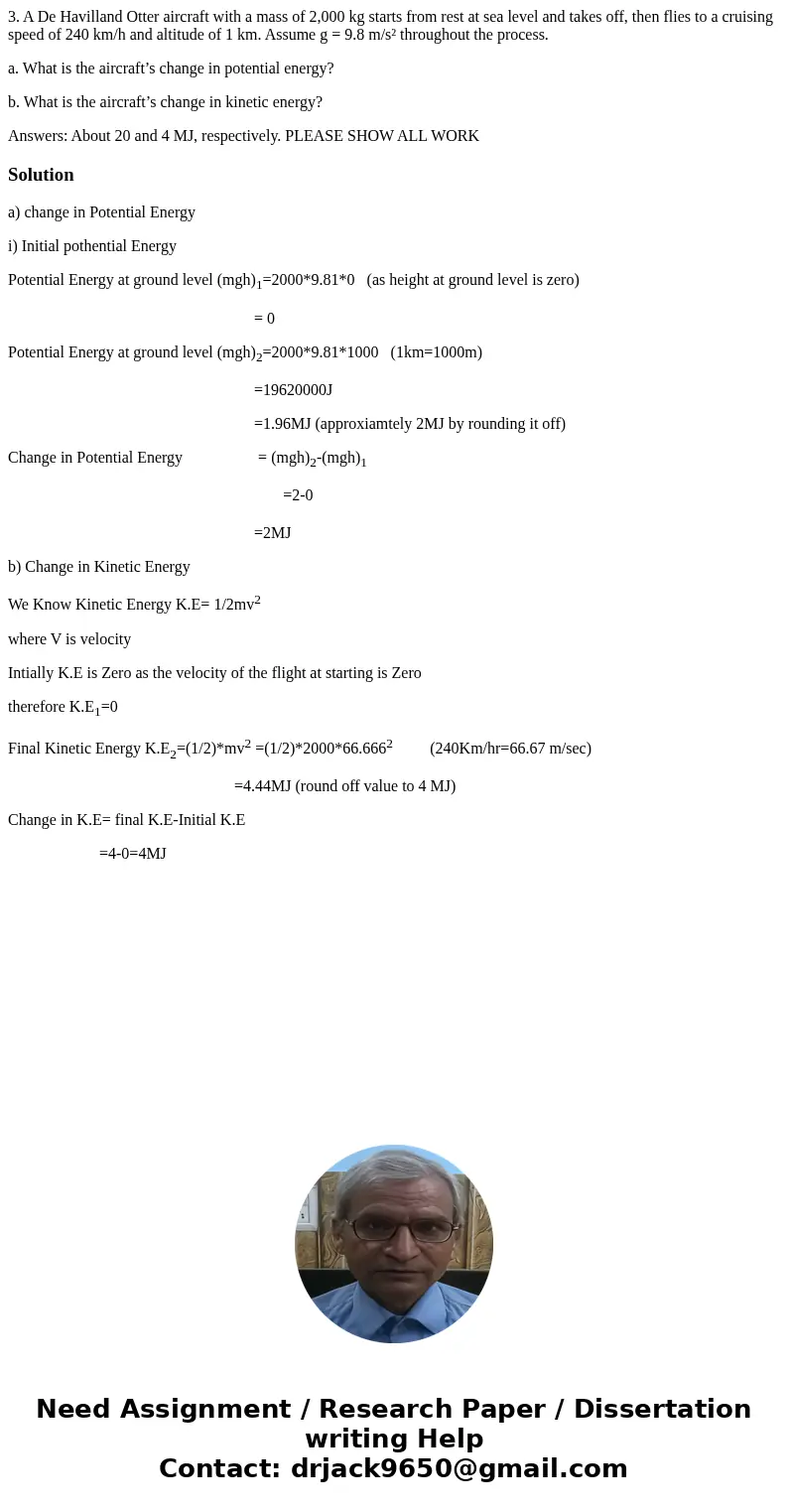3 A De Havilland Otter aircraft with a mass of 2000 kg start
3. A De Havilland Otter aircraft with a mass of 2,000 kg starts from rest at sea level and takes off, then flies to a cruising speed of 240 km/h and altitude of 1 km. Assume g = 9.8 m/s² throughout the process.
a. What is the aircraft’s change in potential energy?
b. What is the aircraft’s change in kinetic energy?
Answers: About 20 and 4 MJ, respectively. PLEASE SHOW ALL WORK
Solution
a) change in Potential Energy
i) Initial pothential Energy
Potential Energy at ground level (mgh)1=2000*9.81*0 (as height at ground level is zero)
= 0
Potential Energy at ground level (mgh)2=2000*9.81*1000 (1km=1000m)
=19620000J
=1.96MJ (approxiamtely 2MJ by rounding it off)
Change in Potential Energy = (mgh)2-(mgh)1
=2-0
=2MJ
b) Change in Kinetic Energy
We Know Kinetic Energy K.E= 1/2mv2
where V is velocity
Intially K.E is Zero as the velocity of the flight at starting is Zero
therefore K.E1=0
Final Kinetic Energy K.E2=(1/2)*mv2 =(1/2)*2000*66.6662 (240Km/hr=66.67 m/sec)
=4.44MJ (round off value to 4 MJ)
Change in K.E= final K.E-Initial K.E
=4-0=4MJ

 Homework Sourse
Homework Sourse